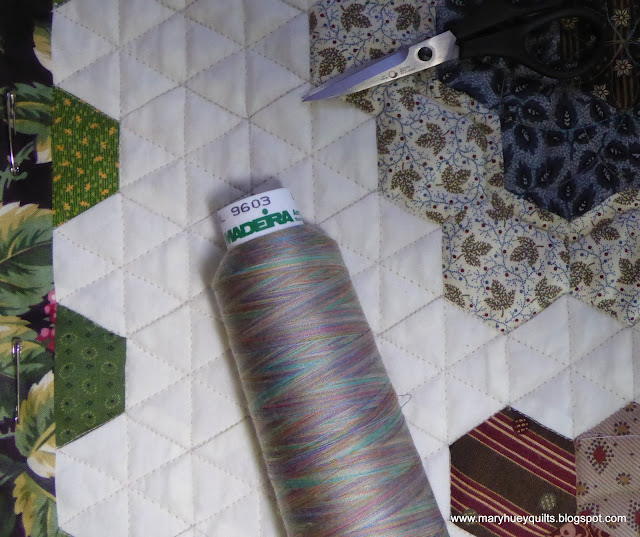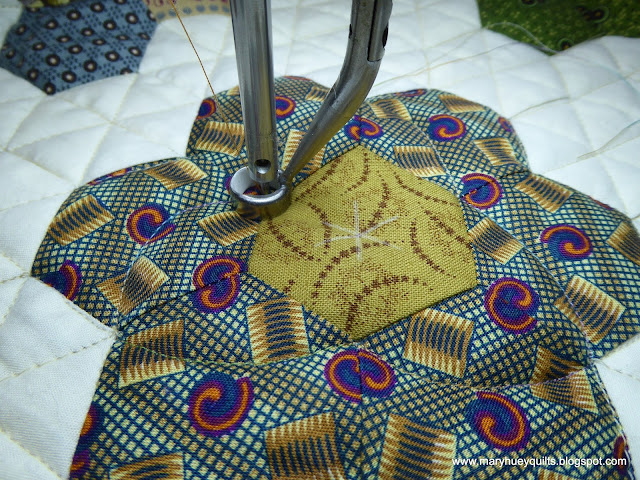As soon as I saw Jen Kingwell's book, Quilt Lovely, I recognized that this delightful block which she has named Glitter would be a perfect workshop project using the y-seam technique that I teach. Participants need to have already taken a basic workshop on the technique with me or used my DVD, Set-In Piecing Simplified to learn it.
I started out with this little group of 4 blocks and have been adding to them all summer and fall -- what fun it is to pick out the fabrics! Each block is it's own little quilt-let!
One of the skills that is part of the workshop is learning to make templates and set them up for easy, accurate cutting and matching!
I decided to make a lap size quilt -- there are 66 blocks. I have not seen anyone put borders on this quilt but I auditioned it just to be sure and decided not to add them.
Last weekend I layered it up with Tuscany Wool batting -- love the loft of that batting -- and began to quilt. I wanted to keep the quilting simple -- easy for me to complete and easy for my students to duplicate if they want.
My first idea was straight line channels from top to bottom.
As it lay on my work table, the long ovalish shape where the blocks come together caught my eye and I decided to emphasize that with the quilting.
After laying down a grid of horizontal and vertical lines, I used my favorite pumpkin seed motif to create a flower that fits gracefully into the oval. The best part of this quilting design on this quilt was that every line started at an edge and ended at an edge -- no threads to bury!!
This weekend, I'll bind the quilt at my annual January quilting retreat and then send it off to the Farmpark to hang with the other workshop samples!
There are open spaces in the workshop and you can register by visiting the Lake Metroparks website HERE. You already have plenty of fabric so all you'll need to purchase is Jen's book, Quilt Lovely.
Don't live in near me? My DVD, Set-In Piecing Simplified, will take you step-by-step through the process of learning this exciting method of y-seam piecing. Just last week, Michele in Kentucky wrote this note to me after purchasing the DVD -- "Thank you, thank you, thank you. I had a chance to watch your DVD today and used your technique to finish a quilt that was headed to the trash. I think it has been in a box for at least 3 years. The instructions left a lot to be desired and I was struggling with all of the y seams. After watching the DVD, I wanted to practice on something right away. I pulled this quilt out, followed what you did and everything fit together and the top is now done and ready to be quilted. The DVDs was fantastic and I'm so glad I ordered it."
It's exciting to know not only was Michele able to understand the technique from the DVD, but she was able to rescue a doomed UFQ!!
I hope you are able to do as much stitching this weekend as you want!!
Mary Huey















































